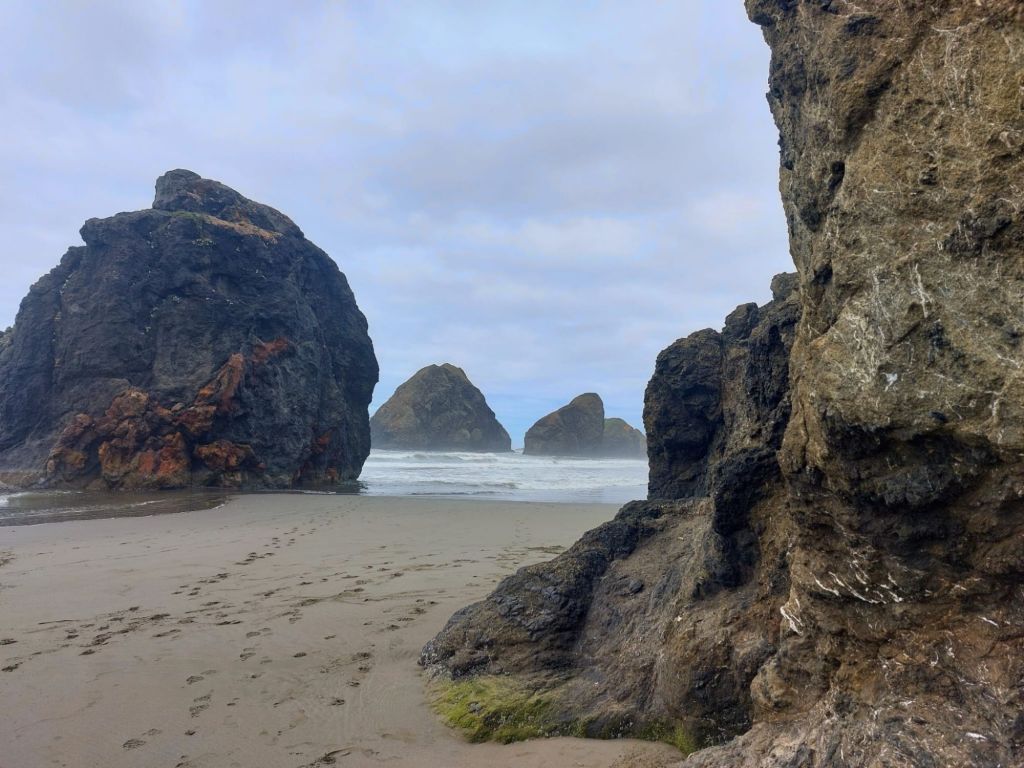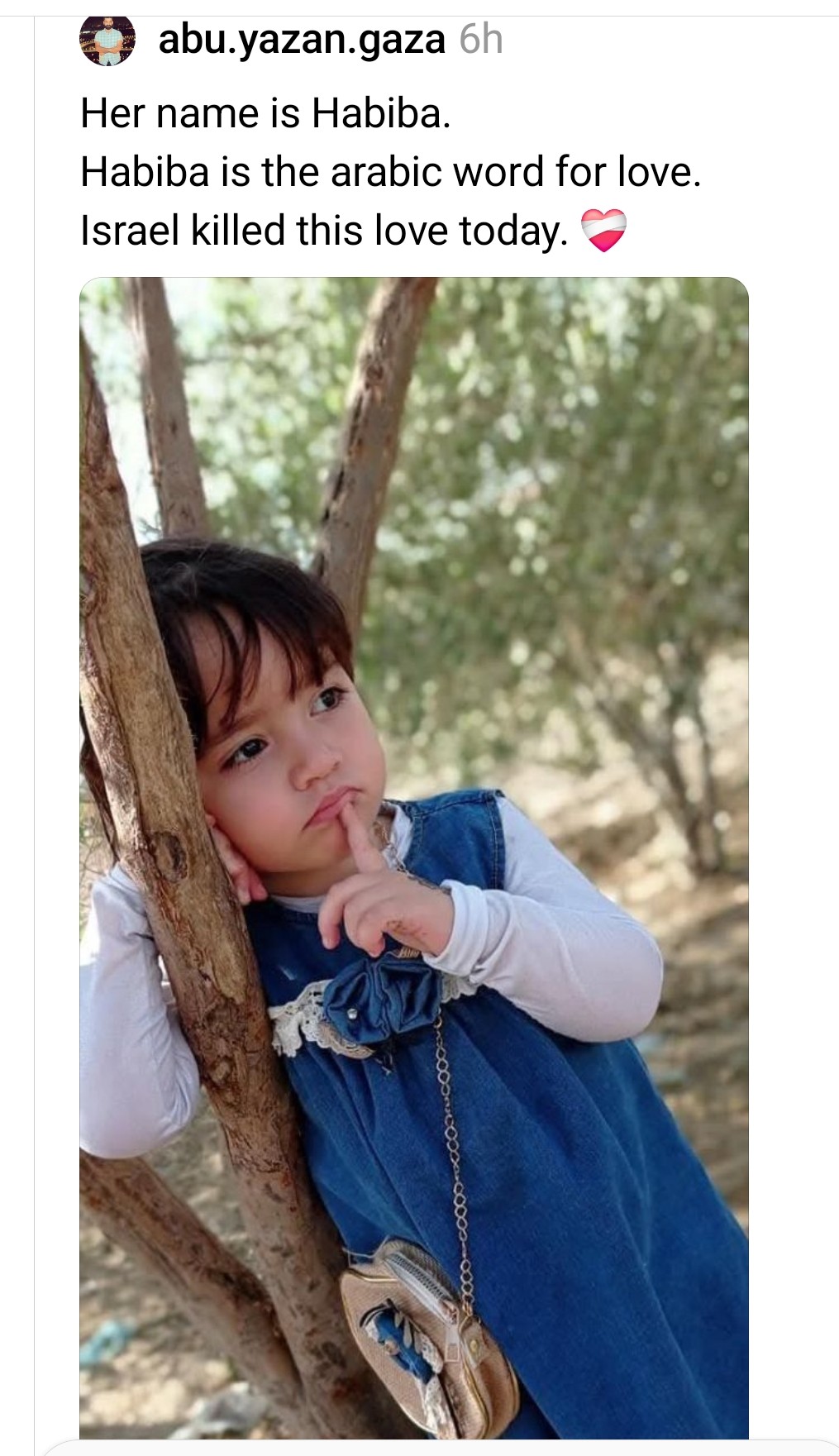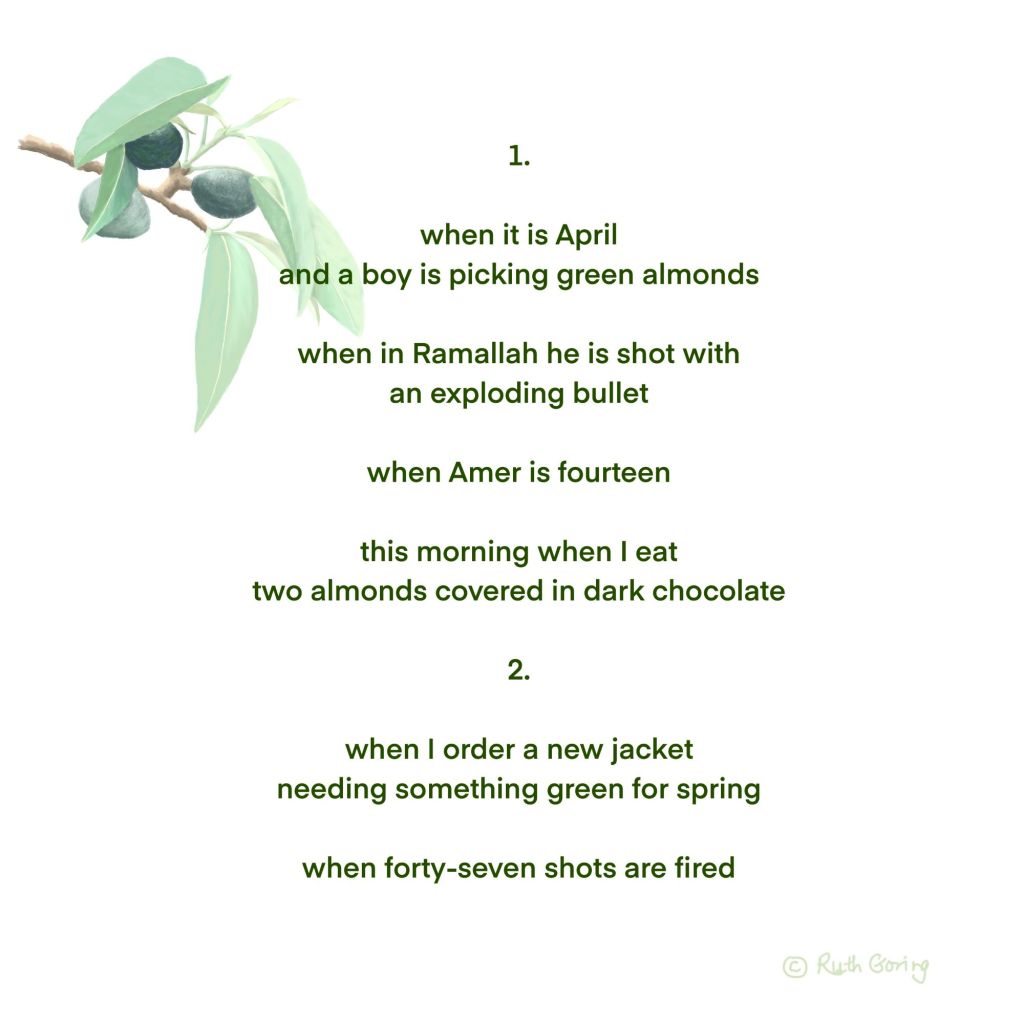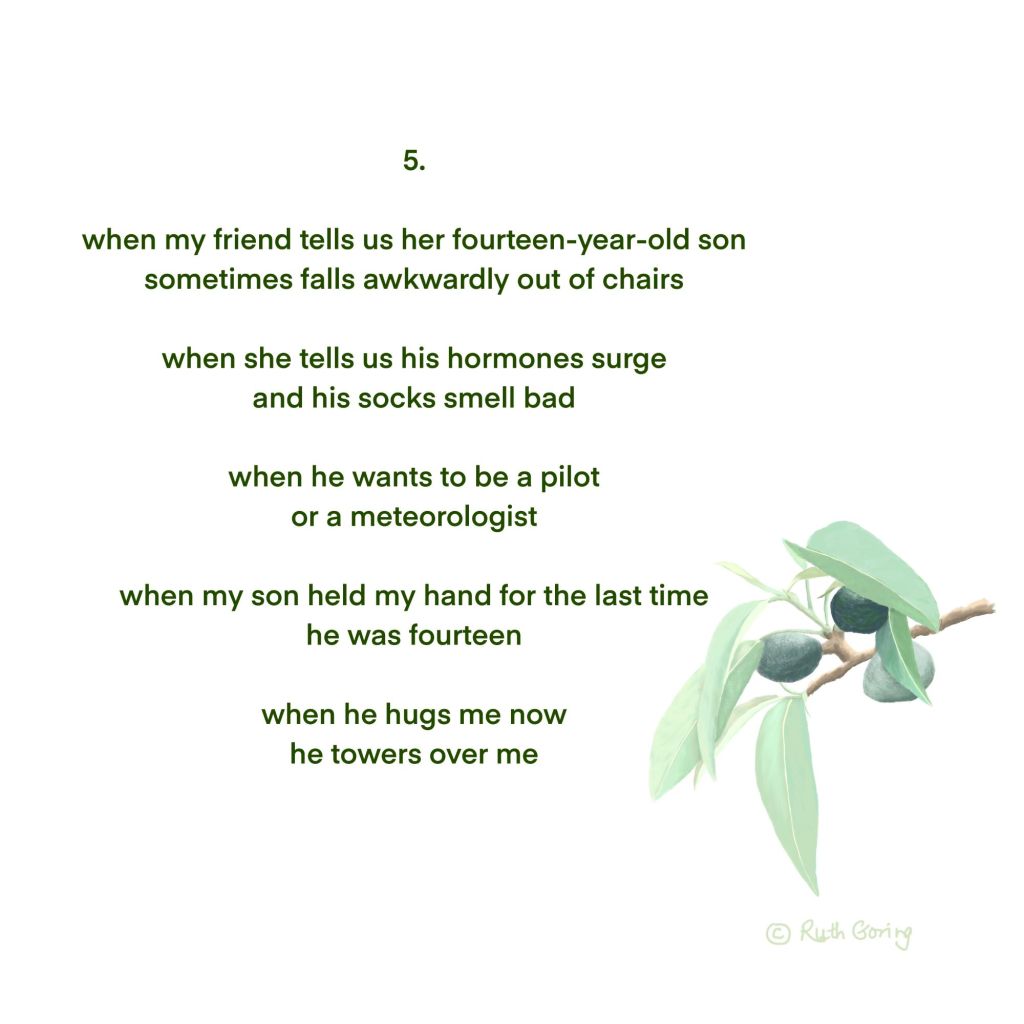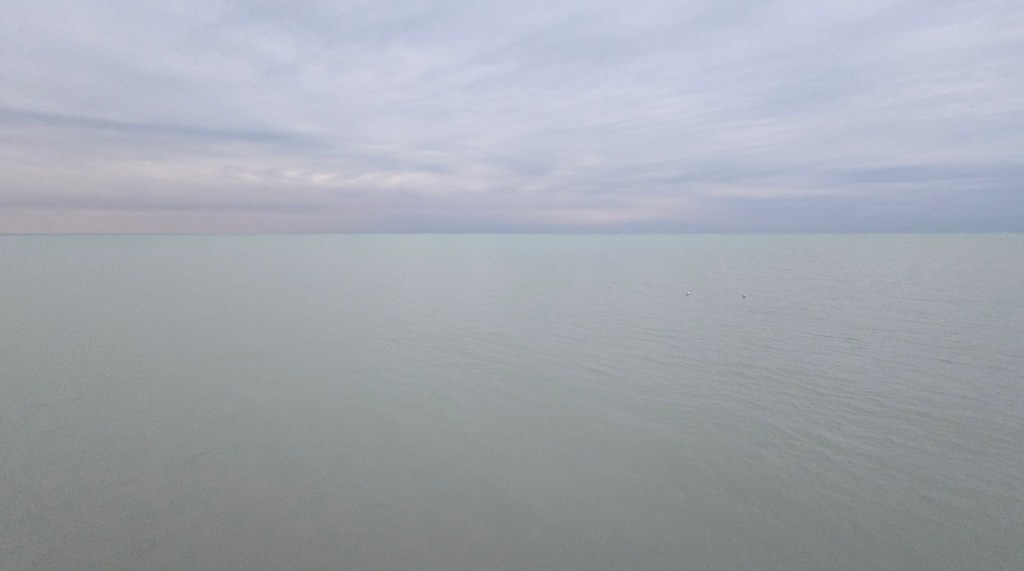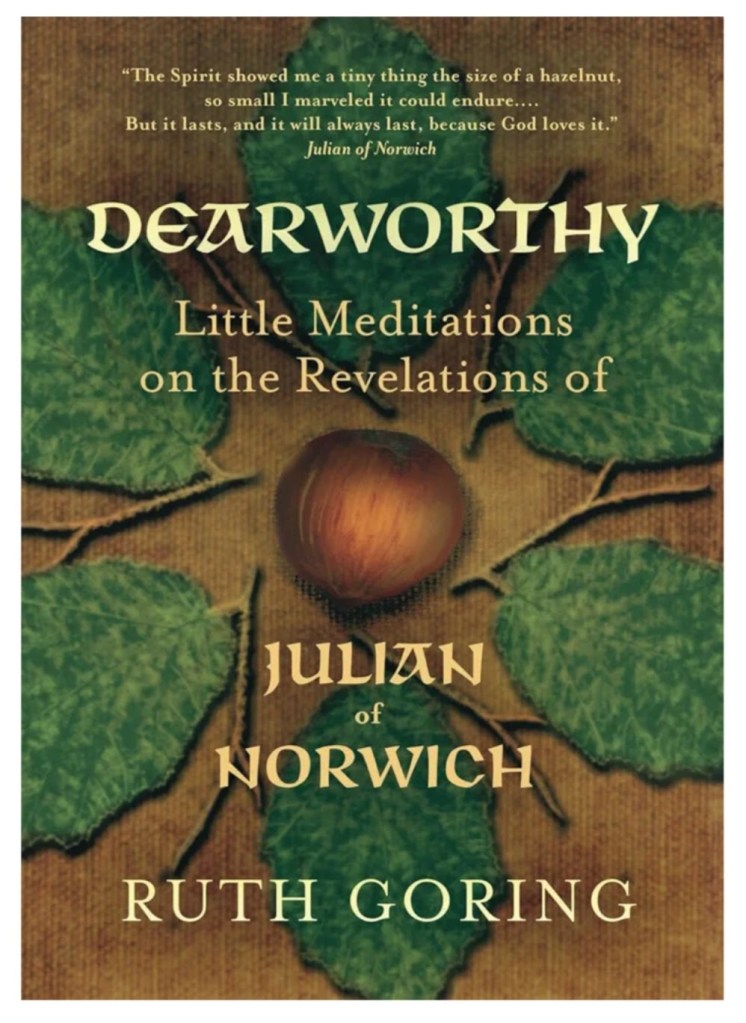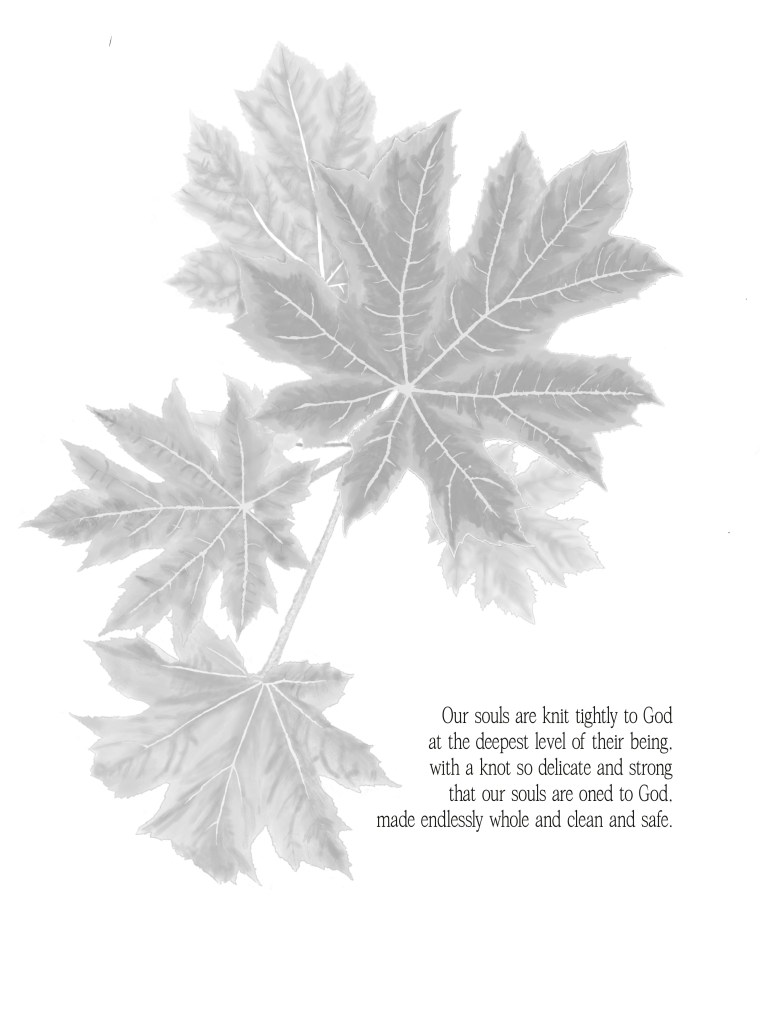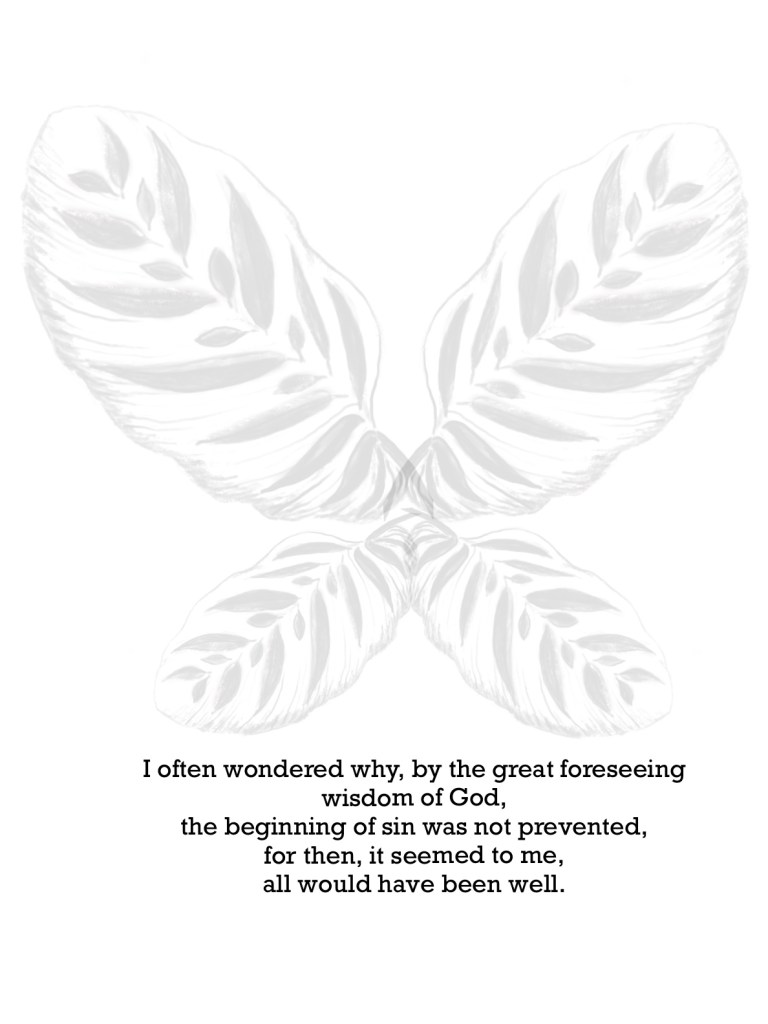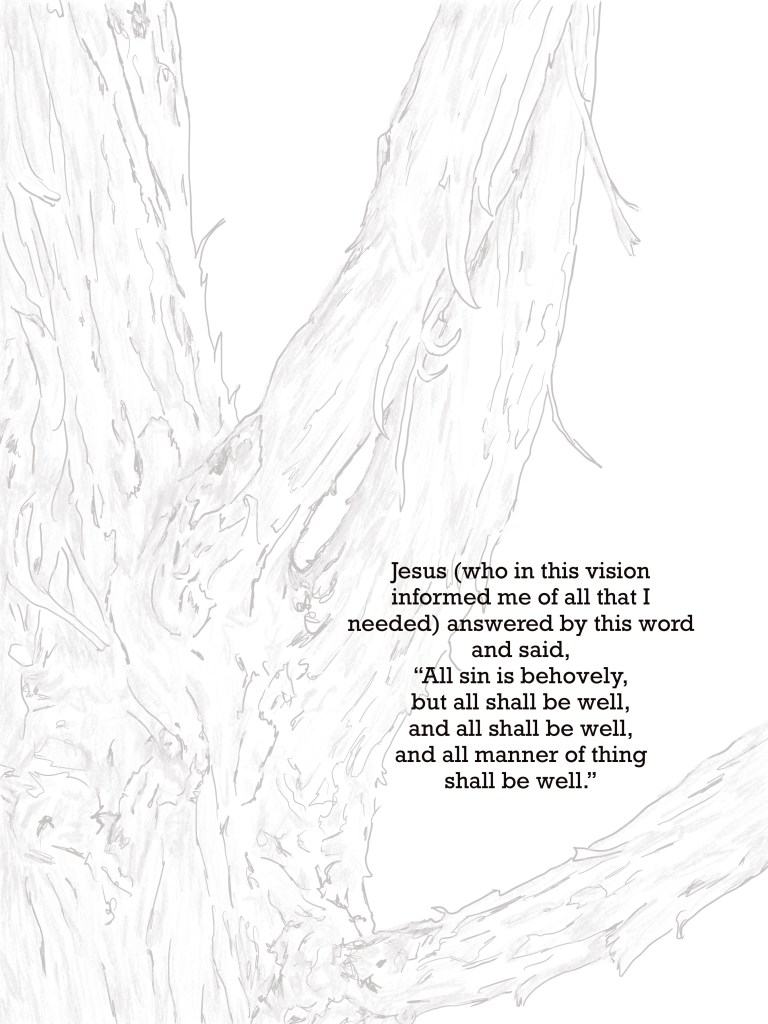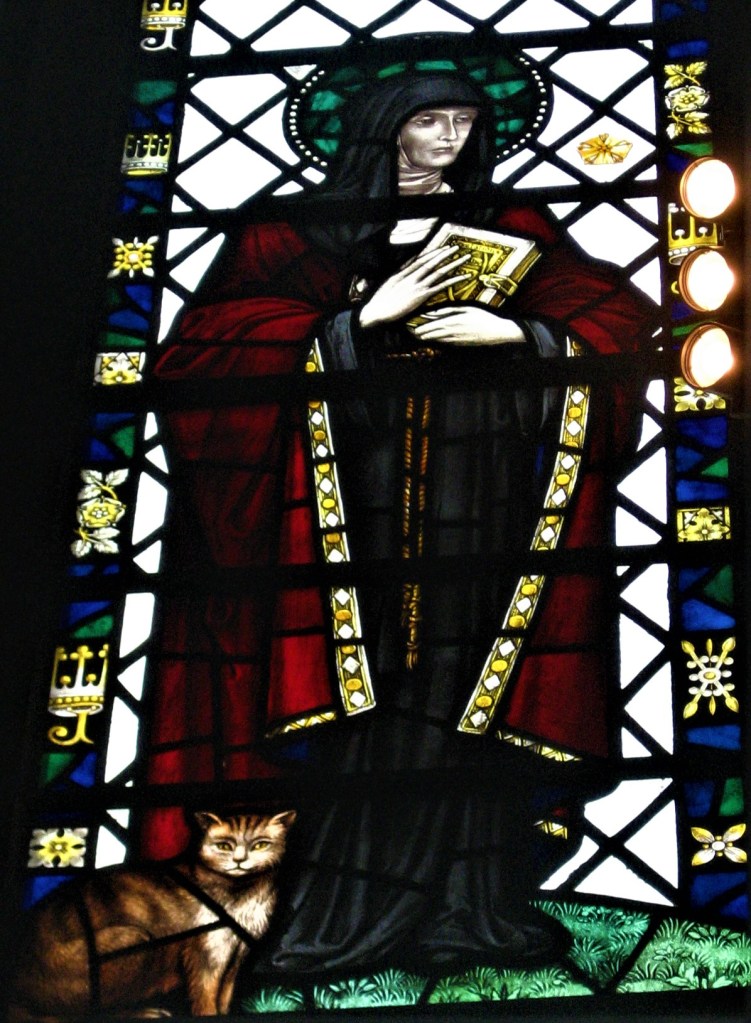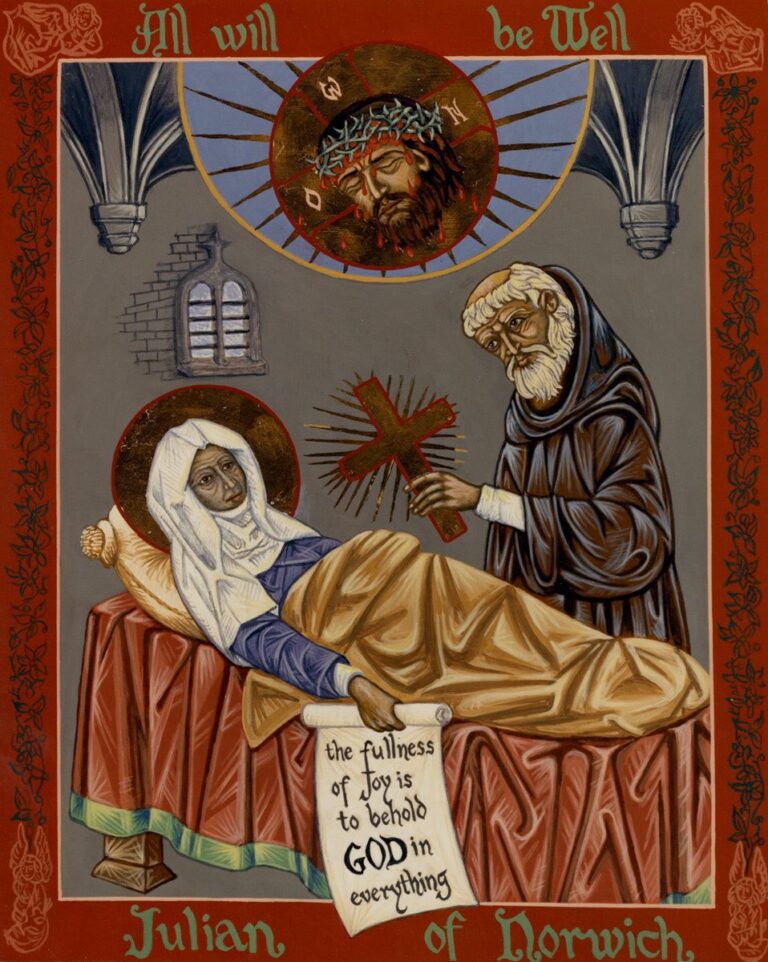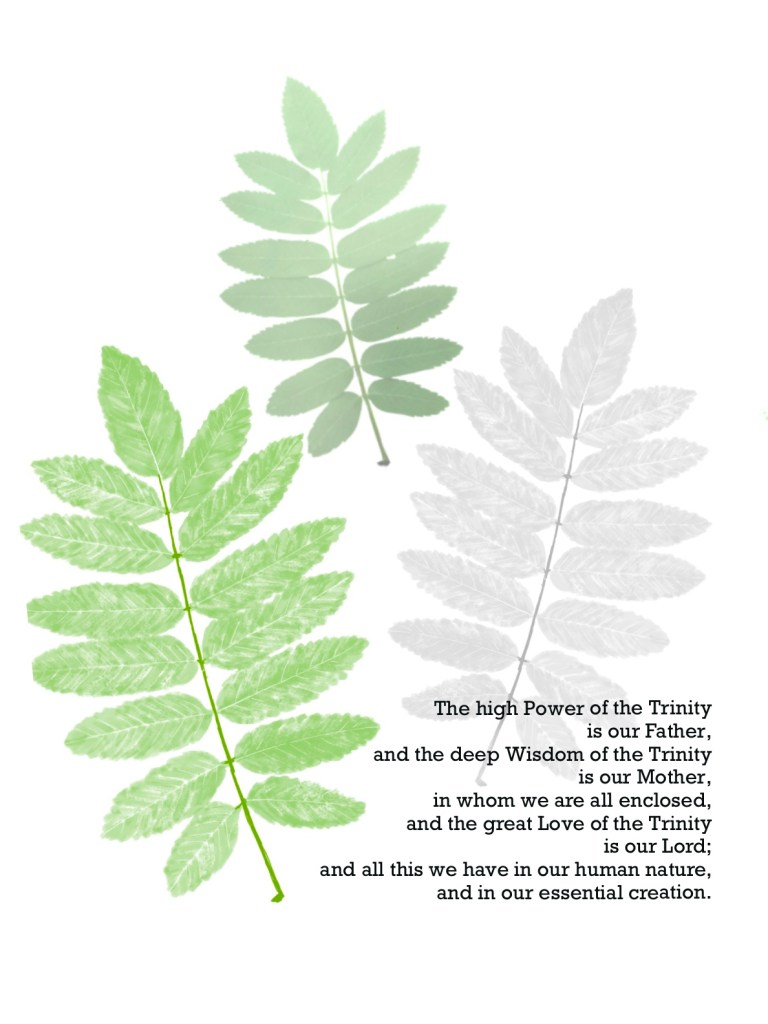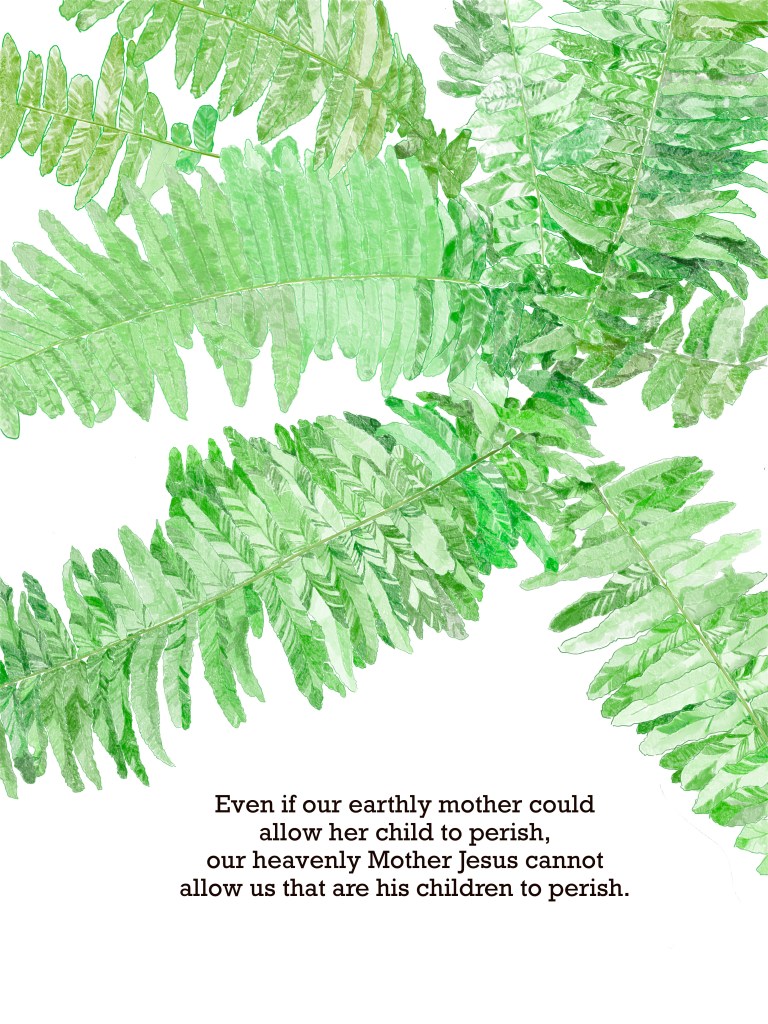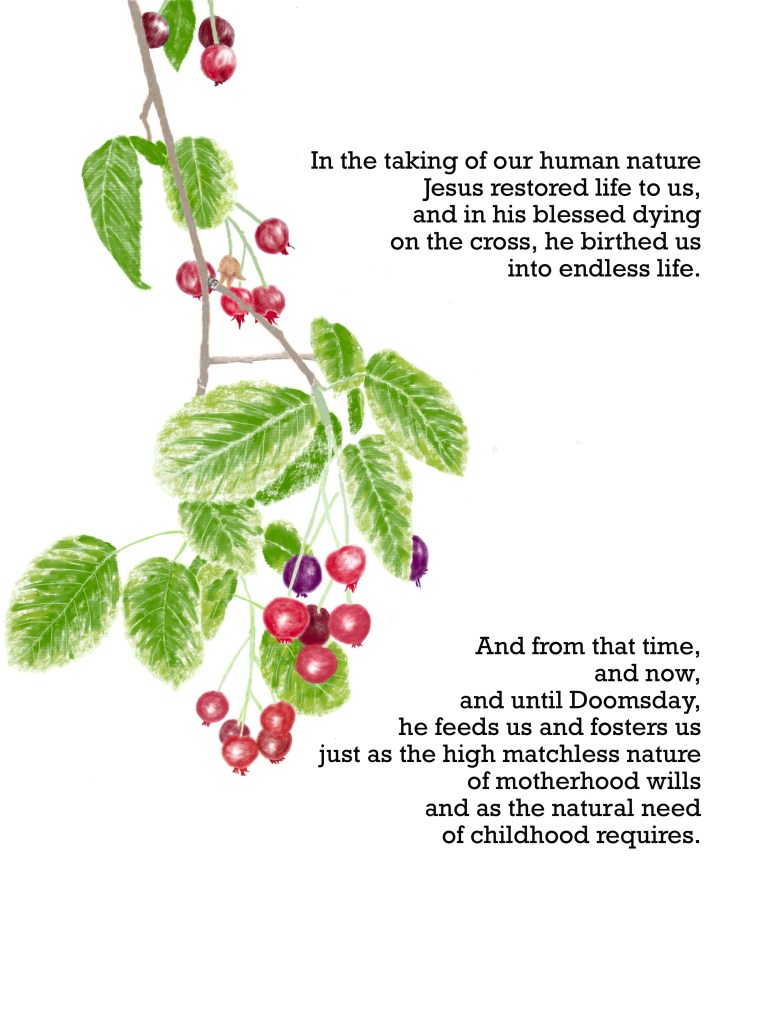My sermon preached December 11, 2022, at Living Water Community Church, Chicago
Isaiah 49:15-16 [NIV Readers ed.]
The Lord answers, “Can a mother forget the baby
who is nursing at her breast?
Can she stop having tender love
for the child who was born to her?
She might forget her child.
But I will not forget you.
I have written your name on the palms of my hands.
Your walls are never out of my sight.”
Luke 13:34
Jesus said, “Jerusalem! Jerusalem! You kill the prophets and throw stones in order to kill those who are sent to you. Many times I have wanted to gather your people together. I have wanted to be like a hen who gathers her chicks under her wings. And you would not let me.”
For a number of years now Julian of Norwich has been a good friend and sister to me, starting well before the pandemic began and deepening in these years of solitude. I am delighted to speak to you today about some of her insights into who God is and how Jesus sees us and loves us.
Julian’s writing is not on the level of Christian scripture. It has not been considered and studied for twenty centuries. It seems to have been little known even within the English-speaking world for a good part of the nearly 650 years since Julian received her revelations, though she is recognized as the first woman to have written a book in English. But Julian is being studied more intensively as of late, and she is recognized as a complex thinker and a mystical theologian who has much to offer.
A few basics about her. She was born in 1342 and lived till at least 1416. We are not sure about her name. All the other Julians we know, in history and in our congregation, are male. 😊 Some believe Julian was adopted as her religious name from St. Julian’s Church in her hometown of Norwich, England. But it’s also said that Julian in medieval times could be a name for either a woman or a man.
As a devout young woman, Julian prayed some prayers that are strange to us but not so strange for a dedicated believer of her time. She prayed (1) to come close to death, (2) to see Jesus’s suffering on the cross as if she were present, and (3) to be marked with three “wounds”: contrition, compassion, and deep longing for God.
At age 30 Julian became deathly ill, perhaps from the Black Death—bubonic plague which was sweeping through England repeatedly in those years. She very likely had already lost her husband and at least one child to the plague. All of those prayers were answered as she lay on her deathbed, having received last rites. As she gazed at a crucifix, Jesus’s suffering became very vivid to her and she received a series of “showings” or revelations—visions of Christ’s passion and messages from God. These showings, and her conversations with God about them, determined the remainder of her life.
Julian went into enclosure at some point after receiving her revelations. Enclosure here means moving into a very small space permanently in order to pray and serve God. She became an anchorite, which is different from a nun or a hermit. Nuns generally live in community. Hermits live in almost complete isolation. An anchorite lives in a small cell attached to a church. Julian’s cell was attached to St. Julian’s Church.
Her cell had another tiny cell attached, where another woman lived and did the necessary practical tasks like cleaning and buying food. Julian devoted herself to prayer and writing, except that in the afternoons people from the community could step onto her cell’s little porch and speak to her through a curtained window. She was essentially a spiritual director to them. And she is often portrayed with a cat, as in the above stained-glass window in Norwich Cathedral today.
The Roman Catholic Church was the only official church in England at this time. The church and the government were tied very closely together. The Mass was in Latin, which was not the language people spoke. And the Bible was read only in Latin. John Wyclif also lived in England at this time, and he took a big risk to translate the Bible into English, which was against the church’s laws. If you were one of Wyclif’s followers and were found to have an English Bible in your house, you would probably be taken outside the city and executed.
Julian probably didn’t know how to read and understand Latin; she calls herself uneducated. So she couldn’t study or quote the Bible the way we do. But she would have learned a lot through sermons and through church processions and plays in English, in which people acted out stories from the Bible. Stained-glass windows were visual ways for people to become familiar with characters and events from the Bible.
Julian did know how to read and write in English. And somehow, even though some of her writings challenged official church teachings, they survived in two handwritten copies and have been translated into modern English.
So here we go with some of Julian’s writings.
I have been combining botanical paintings with some of my favorite quotations from Julian. Julian pays a lot of attention to God as Trinity as she explores the riches of God’s self-revelation. Notice her titles here for the members of the Trinity:
- Power for the Father—not surprising
- More surprising: Wisdom for the Son, whom she calls Mother—we’ll talk more about this
- Also surprising: Love for the Spirit. Julian also calls the Spirit Goodness. I had been used to thinking of the Holy Spirit almost as a mere conduit or a communicator of God’s power and wisdom. Thinking of the Spirit as Love and Goodness in herself is fresh for me, and it strikes me as good theology.
Today we’re going to focus on the Second Person of the Trinity in Julian’s writing, so I have put together some images and quotes about Jesus. Julian is especially surprising when she writes about Jesus as our Mother. I love thinking about this in the context of Mary becoming pregnant with Jesus.
First, not only do we share the richness of the Trinity in our essential creation, as the previous slide said. But also Jesus wishes and chooses to enter our humanity. Jesus is the source of our human nature (which Julian calls “fair”—that is, positive and admirable). And here Jesus is our Mother and our Home: we are born from Christ, we are enclosed in Christ, our life is a journey into Christ.
Jesus establishes our identity in himself and considers it very good.
Regardless of our precise theology of the cross, I think believers generally understand that Jesus suffered there for us and with us. So Jesus is our Mother not only as our source but also as One who suffers to give birth to us. Indeed what Jesus endured on the cross is for the life of the whole world. Our deliverance from sin and evil can also be understood as a delivery—Jesus giving birth to us.
If we were all able to live according to our good human nature and identity, we who are mothers would never neglect or forget our children. But we fail at times, as Julian recognizes here, echoing the words of the writer of Isaiah. Jesus as our Mother, however, will never forget or neglect us.
My own mother was a wonderful person, but she was rather hard on me, lashing out occasionally with physical violence or withering words. I think I reminded her of the failings of my dad that made their marriage difficult at times. Knowing God as my Mother has been deeply healing for me—especially opening up to God’s loving gaze, a bonding gaze that is never averted from me. It’s hard to express how bountiful life has become for me as I’ve meditated on Julian’s confident insights into Jesus’s motherly love.
This is a beautiful summary statement of what the incarnation and the cross mean as Jesus’s mothering of us. And look at the threefold promise of Julian’s next sentence: in the past, the present, and the future Jesus continues to feed and foster us. Jesus gives us the food we need to survive both physically and spiritually. And Jesus fosters us like a mentor, helping us to become more and more fully ourselves.
So our life is grounded in the life of our Mother. I want to encourage us to use the title Mother for Jesus, or for the triune God, more often and more freely. We are most used to saying Father (Baba) or Lord (Bwana), but the Bible gives us many examples of God being called our Mother and acting like a mother. Nowadays I sometimes playfully address my own prayers to Mother Lord. In Swahili you could say Bwana Mama!
And remember that Jesus has subverted the title Lord or Bwana itself. When the Bible was translated into English, English society was feudal. So it’s interesting that Lord is the word used to translate titles for God and Jesus in both the Jewish Bible (our Old Testament) and the New Testament. Lords were rich men who owned large pieces of land, farmed by poor people who didn’t own anything. When we call Jesus our Lord, we must remember that Jesus is not at all that kind of lord. This Lord is our mother and our servant, our friend who invites us into maturity and partnership.
Let me close with a quotation from a sermon by Wil Gafney, a Black priest and scholar who happens to love the writings of Julian of Norwich. Dr. Gafney’s words remind me of Mary’s song.
Jesus didn’t want to be king.
Kings take. But Jesus gives.
A king will take your sister, wife or daughter. But Jesus gives women dignity.
A king will take and tax your crops. But Jesus gives the Bread of Heaven and earthly food to the hungry.
A king will take your life if you get in his way, but Jesus gives eternal life.
Amen.
Notes
Scripture version and sermon language were kept simple to honor the many nonnative English speakers in our congregation. I recommend this practice: it helped me try to keep my thoughts really clear. A number of our congregants speak kiSwahili, so I include a few words from that language toward the end.
Image of Julian on her supposed deathbed comes from this page, where I could not find an artist credit.
Dr. Gafney’s sermon is dated October 26, 2022, and can be found here.
Botanical images
These digital paintings are all by Ruth Goring.
- Northern mountain ash; reference photo is in Allen J. Coombes, The Book of Leaves, ed. Zsolt Debreczy (Chicago: University of Chicago Press, 2010), 479.
- Northern white cedar, Glen Ellyn, Illinois.
- Eastern bottlebrush, Churchill Park, Glen Ellyn, Illinois.
- Sword fern, Matthiessen State Park, Oglesby, Illinois.
- Serviceberries, Chicago, Illinois.
- Wild strawberries in my garden, Chicago.
One more thing . . .
In my newsletter I’ve been sharing more botanical art and brief Julian meditations, along with children’s book recommendations. Feel free to contact me (Contact tab, upper right) if you’d like to be added to the address list.


